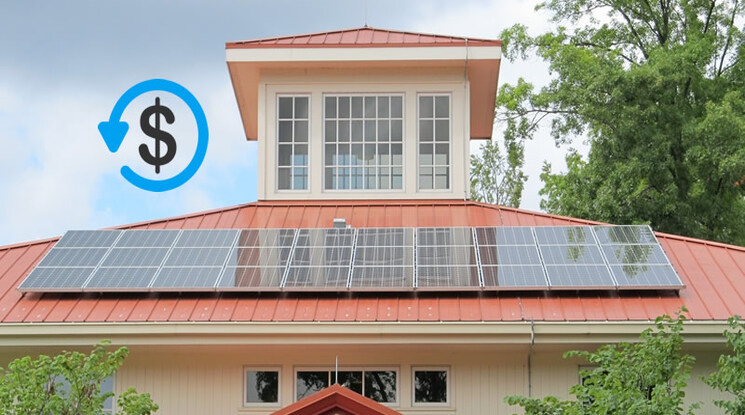Solar power is more accessible and affordable than ever, and it’s becoming a popular choice for homeowners and businesses across the United States. Not only does solar energy help reduce your carbon footprint, but it can also save you money in the long run. To make the switch to solar even more enticing, the United States government and various states offer a range of incentives and rebates. In this blog, we’ll break down what solar incentives are available in the USA and how you can claim them.
Federal Solar Incentives
The federal government provides several incentives to encourage the adoption of solar energy. These incentives make going solar even more appealing to homeowners and businesses.
a. Solar Investment Tax Credit (ITC)
The Solar Investment Tax Credit, often referred to as the Solar ITC, is one of the most significant federal incentives. It allows you to claim a tax credit equal to a percentage of your solar installation costs. As of my knowledge cutoff date in September 2021, the ITC covered 26% of the installation costs. However, keep in mind that these percentages can change, so always check the current rates.
To claim the Solar ITC, you’ll need to file IRS Form 5695 when you do your taxes. Make sure to keep all your receipts and installation documents as proof.
b. Residential Renewable Energy Tax Credit
For residential installations, the Residential Renewable Energy Tax Credit can also help you save money. This credit can offset a portion of the costs associated with the installation of solar panels. It is an excellent option for those who might not fully qualify for the Solar ITC.
State Solar Incentives
In addition to federal incentives, many states offer their own incentives for solar installations. These state-level incentives can significantly reduce the cost of your solar project. However, these incentives can vary widely from state to state.
a. State Solar Tax Credits
Some states offer their own solar tax credits, which are similar to the federal Solar ITC but are applied at the state level. These credits can be claimed when you file your state income taxes. Check with your state’s tax authority to find out if such incentives are available.
b. Rebates and Cash Incentives
Many states provide cash rebates for solar installations. These rebates can be based on the size of your system or the amount of energy it’s expected to produce. In some cases, they can cover a substantial portion of your installation costs.
c. Property Tax Exemptions
Several states offer property tax exemptions for solar installations. This means that your property’s assessed value won’t increase because of your solar panels, helping you save on property taxes.
d. Sales Tax Exemptions
In certain states, you can enjoy a sales tax exemption on your solar equipment purchase. This can save you a significant amount of money when you buy your solar panels and related equipment.
Utility Company Incentives
Your local utility company may also offer incentives to go solar. These incentives can include cash rebates, performance-based incentives, and net metering programs.
a. Cash Rebates
Utility companies sometimes provide cash rebates to customers who install solar panels. These rebates can help reduce the upfront cost of your solar system.
b. Performance-Based Incentives
Some utilities offer performance-based incentives, which means you receive payments based on the amount of energy your solar system generates. These incentives can add up over time and provide additional savings.
c. Net Metering
Net metering allows you to earn credits for excess energy your solar system produces. These credits can be applied to your future energy bills, effectively reducing your electricity costs.
Solar Renewable Energy Certificates (SRECs)
In some states, you can earn Solar Renewable Energy Certificates (SRECs) by producing solar energy. These certificates can be sold in a market, providing an additional source of income for solar system owners. Check whether your state offers an SREC program and how you can participate.
How to Claim Solar Incentives
Claiming solar incentives is a straightforward process, but it requires some paperwork and organization. Here are the steps to follow:
a. Install Your Solar System: Before claiming any incentives, you’ll need to have your solar system installed by a qualified professional.
b. Gather Documentation: Keep all your installation documents, receipts, and records. These will be crucial when applying for incentives.
c. Federal Incentives: For federal incentives like the Solar ITC, file IRS Form 5695 when you do your taxes. Make sure to fill it out accurately and attach all required documents.
d. State Incentives: To claim state-level incentives, check your state’s official website or contact your state’s energy office for information on how to apply. They will guide you through the process and inform you about any necessary forms.
e. Utility Incentives: If your utility company offers incentives, visit their website or contact their customer service to learn more about how to claim them. They will provide you with the necessary forms and instructions.
Conclusion
Solar incentives in the USA can significantly reduce the cost of transitioning to solar energy, making it an even more attractive option for homeowners and businesses. These incentives include federal tax credits, state-level incentives, utility company programs, and more. By understanding what’s available and how to claim these incentives, you can make your solar installation even more cost-effective while contributing to a greener and more sustainable future. Don’t hesitate to explore the incentives in your area and start your solar journey today.




